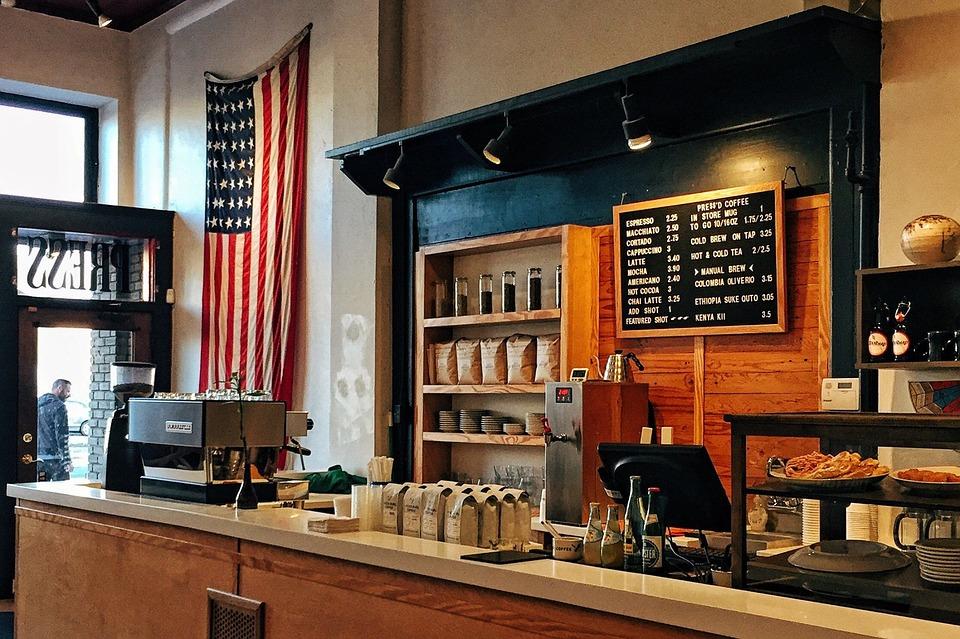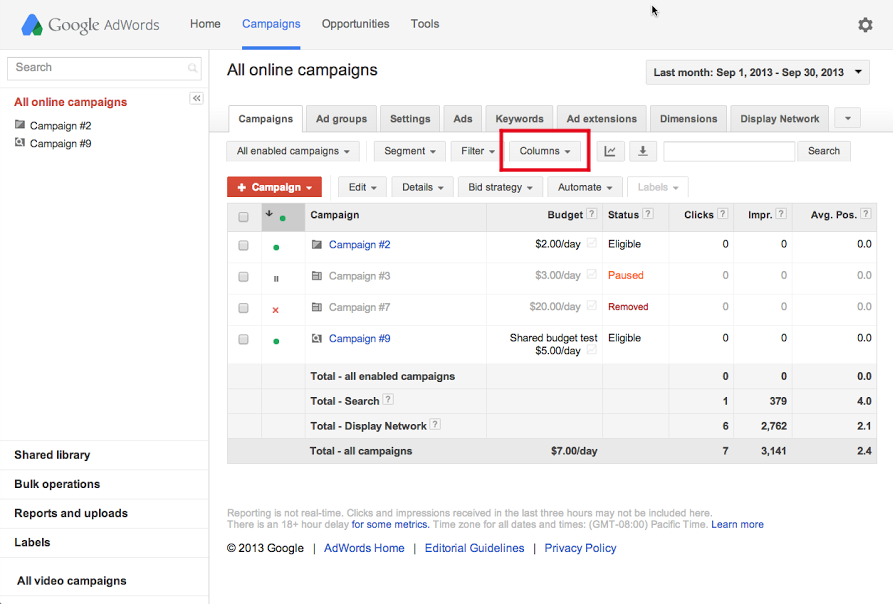Conversion tracking isn’t always easy.
- The simplest conversions, when customers click directly through from their first interaction with your site to making an online purchase, only make up a fraction of your sales.
- Customers might visit your site multiple times before converting, and might take several weeks or months to make a purchase.
- They also might use a variety of different devices to view your site, making it hard to keep track of all the actions they took that led to conversion.
While online conversion tracking can handle these variations to a certain degree, it’s often a lot more difficult to track users to take their custom offline.
If your business runs a bricks-and-mortar store as well as a digital storefront, it can be very hard to know which marketing actions have led to a sale.
- A customer might come across your website online, read product reviews and all your marketing details, then simply disappear.
- What you might not be able to track, is whether they then walked into your physical store to make their purchase at the counter.
In spite of the growing popularity of online purchases, many customers still prefer buying from stores – there are often very few ways to track their movements to see what methods of marketing are working and which ones are just leading to potential customer drop-offs.
- From an analytics standpoint, a website visitor who clicks through a few links and then leaves, never to return looks exactly the same as a customer who learns about your product online, then makes a purchase in person at your store.
- You can’t always gain accurate data on where in-store customers first discovered your product.
Many companies, when faced with this confusion over where potential customers are going, will choose to follow ‘better safe than sorry’ logic and pour more money into marketing towards these ‘almost sales’.
- In reality, this money might be wasted because the visitors you’re trying to appeal to have already made a purchase.
Thankfully, as is often the case with analytics and online data tracking, Google has a solution.
How Does It Work?
Google’s been working for years to find better ways of tracking sales conversion data.
- For example, Google Ads and Analytics users can generate a unique code for offline purchases to help them identify customers who started their conversion process online.
One of the most useful sources of data that Google has access to – and which it’s finding new ways to take advantage of – is smartphone information.
- Most phone users who sign into a Google account will stay signed in over time, even if they’re not actively using their phone.
- This means that Google can track where they go throughout their day to spot patterns in their habits.
- Crucially, Google can spot when a customer researches a product online, and then travels to a bricks-and-mortar location to complete their purchase.
Obviously, there are plenty of holes in this system that need to be worked out. A lot of the time, Google’s having to put together their data with a fair amount of guesswork to be able to tell what’s going on.
- Just because somebody visits a store, it doesn’t necessarily mean they buy something.
- There’s limits to how far Google’s monitoring can work.
Data collected from Google’s in-store conversion tracking has to be taken with a pinch of salt, and it’s for this reason that Google is constantly working to improve its algorithms and the data it records.
To make its results more accurate, Google’s been running a beta test lately to try out some new data tracking for businesses.
Not everyone is eligible, but those who are involved are reporting massive growth as a result of their ability to further track customer behavior both online and in-store.
Boosting Sales with In-Store Data
Google has a lot of faith in their in-store metrics, and rightly so – those who’ve already been using in-store tracking have been making interesting discoveries:
- By utilizing store visit data, companies are able to make more effective use of their ad performance metrics.
- This has led to an average of a 4x growth in conversions for companies actively monitoring store visits.
Beyond this, there’s a particular benefit for companies who focus on mobile customers.
It’s been found that a customer is far more likely to look up a product on their phone before heading into a store than they are to do their research on a desktop:
- According to some data, mobile customers are 18% more likely to visit a store afterwards than desktop users.
- This makes sense – 88% of shoppers admit to researching online before making a store purchase, so internet tools are often used to supplement an intended offline purchase.
- Targeting mobile users who visit stores with data from Google’s in-store tracker has led to some retailers experiencing a 10x rise in successful conversions.
For those who are interested in understanding online customer mentality (and for companies looking to increase their sales), this is really interesting data.
Before being able to track the relationship between online and offline customer interactions, there was no way of knowing the extent to which an online search influences offline behavior.
This means that companies can better focus their online campaigns to not just encourage internet purchases, but also to drive customers towards physical stores as well.
The Future Isn’t Quite Here Yet
Google’s rolling out new features for their in-store tracking every so often, and are hesitant to give wide access until it’s been proven that the stats that are being collected are reliable.
- While their latest beta is pretty small at the moment, its features will no doubt be incorporated into existing analytics tools soon enough.
There’s also a problem of technology proliferation:
- Google only has data available for users who are willing to share, and most people aren’t thrilled about their comings and goings being monitored by a company so that they can make more effectively targeted advertising.
- Even on Android, Google has a limit to the amount of data they can glean from users.
- For iPhone users, Google has even less data, as they’re not in a position to track Apple devices the same way they can track Android phones.
- Privacy laws prevent Google from peering too deeply into any individual user’s habits and trends, and there’s limits to how much data Google can give out.
Several of these roadblocks don’t appear to be going anywhere any time soon.
- Google goes so far as to remind AdWords users that store visit conversions don’t track individual people
- Instead, the records are built by amalgamating trends from a variety of users to give a ballpark idea of the journey a customer goes through online before making their offline purchase.
This being the case, Google’s method for dealing with these problems is to create smarter and smarter tracking algorithms which can piece things together with less than perfect data.
- Companies who are looking for really smart, helpful insights into how their online presence is increasing offline sales are going to have to be patient while Google continues to improve their service.
In the meantime, there are plenty of ways for businesses to get involved tracking their site visitor stats offline that will already provide some helpful insight into customer behaviors.
A simple version of in-store tracking is already available through Google AdWords – this is a great place to start until the current beta provides more tools and improved algorithms for tracking customers.
- This version has been available since late 2014, but Google have been adding features and tweaking its metrics over time to improve its service.
- When the newer version of in-store tracking becomes available, it’ll likely replace the current public tool, and will function in a very similar way.
So if you’re looking to join the current beta, you’ll probably be disappointed. But the current tracker available for AdWords is a great place to start in the meantime.
An Exclusive Club: Eligibility Criteria
Not every business has access to Google’s data on offline customers.
- Currently, only approved businesses have access to in-store metrics.
- An even smaller number of businesses are currently trialing Google’s beta for the next instalment.
- Because of the sensitive nature of the data, and because records can only give ballpark accuracy, Google’s tracker in its current form is only really useful for large companies.
At the moment, before being eligible for trialing the tracker, companies have to meet the following requirements:
- Have an established presence in an eligible country – these are primarily in North America and Europe, although potential users need to enquire to find out if their country is on the list.
- Operate multiple physical stores and offer large-scale offline distribution for products.
- Receive customer interactions in the thousands on a regular basis, including thousands of ad clicks through AdWords as well as thousands of footfall in physical stores per month.
- Have an up-to-date Google My Business account, which is linked to an AdWords account and which contains details for every individual store that is currently in operation.
You’ve probably spotted that the in-store tracker is designed specifically for large companies.
- Google’s not currently in a position to widen the scope of this service for smaller companies, although I’m willing to bet that they’ll look to do so over the next few years as their data processing becomes more sophisticated.
If your business is eligible for the tracker, read on to find out how to go about setting it up and how to access your data.
Alternatively, skip down a bit, to where I discuss an alternative option for smaller companies or businesses who don’t sell through a storefront.
Getting Set Up
As this tracker is currently limited, there’s no automated process to start Google tracking your customers’ real-world purchases.
- Instead, Google asks that you contact your AdWords representative to request access.
- If Google’s satisfied that you meet the necessary requirements, you’ll soon be able to see the statistics for your customers in your AdWords account.
Alternatively, Google might decide that your business isn’t a perfect fit for the tracker.
- If this is the case, you may simply need to wait until later versions of the tracker are available, whether than be the end of the current beta, or another point in the future.
- Regardless, you’ll still be able to manually track offline customers to a certain extent, as detailed further down in this article.
Accessing Your Data
If you’re eligible for the in-store tracker, your customer data will appear in your AdWords dashboard, under the campaigns tab.
To view the data:
- Click the Campaigns tab
- Go to the Columns menu and click ‘Modify Columns’
- Select ‘Conversions’ from the Select Metrics box.
- Use the arrow icon to select All Conversions.
Your reports from AdWords will now include all of your conversion metrics.
This will include all online conversions, as well as the new in-store tracking metric to show you when people who visited your site through AdWords then took a trip to a physical store.
- Basically it’ll let you know about every time somebody made a purchase through your site as a result of AdWords, giving you one single number for all of your conversions.
It’s also possible to see all of your conversions separately, which is worthwhile if you’re wanting to know just how many customers visit a store after seeing your site online.
This is simple enough to set up:
- Navigate to the Campaigns tab on your AdWords dashboard.
- From the Segment drop-down menu, select ‘Conversions’, and then ‘Conversion name’.
Now instead of showing you reports with a single conversion metric, everything will be separated into their own columns.
- This will help you identify the various ways that your customers are converting.
- It’ll also help you spot particular words or phrases in your ads that are attracting online customers or in-store purchasers.
- You can use this information to better track the effectiveness of various keywords.
Minus Numbers
The tracker isn’t exactly perfect.
It won’t give you numbers for individuals, which has meant that Google’s noticed a fun little quirk which bears mentioning.
- Occasionally, in instances of small numbers, the number of in-store conversions will be displayed as ‘-1’.
If this happens, don’t worry – it doesn’t mean that a customer has returned a product, reducing your sales.
- This is simply what happens when the tracker – which is aggregating and compiling data from thousands of users – displays an average of between 0 and 1.
For privacy, and because of the scarce nature of the data, Google can’t give accurate metrics for individual customers, so the tracker rounds figures down instead. This shouldn’t throw off your AdWords conversion metrics, as it’ll only happen when there’s a tiny number of in-store sales being tracked.
If you are interested in tracking individuals, the alternative tracker below might be more helpful for you.
An Alternative Option
Obviously the in-store tracker isn’t perfect.
- It’s only for stores with multiple locations, which are dealing with huge footfall and which are using Google to produce thousands of leads regularly.
- Not all business that offer online sales even have premises that customers can visit, or their products and services might not be easily packaged and sold.
For businesses that aren’t going to gain much from the in-store tracker (or for ones that can’t get approval for the tracker in the first place), Google also has a manual offline purchase tracker that can be used instead.
Offline Conversion Tracker
This tracker is useful for a lot of businesses.
- If your business advertises online but it’s common for sales to be made over the phone or in person, this will be far more useful.
- You’re able to include returns that happen within 30 days of the sale, helping to keep your stats more accurate.
- Unlike the in-store tracker which won’t always be precise in spotting a sale, this tracker only logs a conversion when you know for definite that it’s happened.
For every visitor to your website who arrives via Google AdWords, you’re given a unique ID number (known as a ‘GCLID’) which you can use to track your potential customers.
Once a deal is signed or a purchase is made offline, you can enter the customer’s GCLID into AdWords along with the details of the sale, and AdWords will calculate your data as a result.
- The GCLID is included with the lead’s contact information if they originally came to you through AdWords, helping you to sift through your potential customers to spot the ones who convert.
- This helps you to identify the keywords and phrases that draw in offline customers, and help you to get better, more accurate conversion tracking.
There are multiple ways to set up offline tracking, and different tools available depending on your specific needs, so it’s wise to read up on everything that Google has to offer in this respect and spot what will work for your business.
That said, while this tool might come in handy, it has a fair few downsides:
- Conversion tracking is not automatic – you need to manually import data to get accurate figures, which be a long and dull process if you’re dealing with a lot of clients.
- This tracker will only be able to give you solid information on completed conversions – you won’t get a sense of what content is attracting visitors but which needs a little bit of work.
- The tool is only available for use with AdWords – any customers who discover your site through other avenues won’t count towards your numbers and can end up throwing off your metrics.
- If AdWords isn’t for you, there are also Analytics options, although these can be a bit hit-and-miss.
Of course, these weaknesses will depend entirely on your business and the resources you have available – while it might not be perfect for everyone, there’s plenty of benefit to be gained from the offline tracker.
If your business isn’t large enough or doesn’t have enough physical sales locations to make the in-store tracker a viable option, it’s a solid alternative.
The Future of Conversion Tracking
As time goes on, companies are going to find more impressive, nuanced and elaborate ways of keeping track of customer activity.
- In many cases, there’s already plenty of records available, but it’s difficult to break down and analyze it.
- Progress is being made into finding ways to sort through big data and customer records, and better interpret their results.
Google’s current in-store tracking beta and its ongoing efforts to find out more about buyer behaviors will only become more sophisticated as time goes on.
In the meantime, there’s plenty of opportunity to make use of their publicly available tools, and anticipate the possibilities that come from getting a better understanding of what your potential customers are doing after they visit your website.
Tracking your customers might not be easy, but it’s getting better.
Images: Pixabay, Pixabay, Flickr, Pixabay, Flickr, Flickr, Flickr, Flickr, Pixabay, Google, Flickr, Pixabay, Pixabay, Pixabay.











